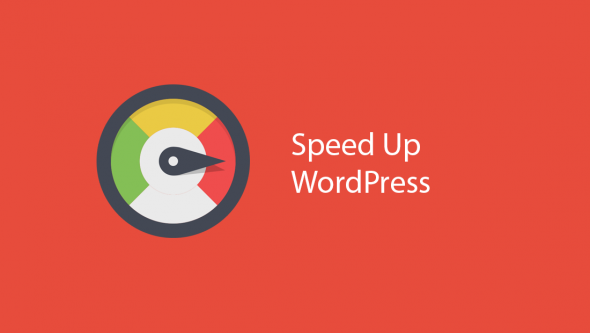Sign up to our Newsletter
WordPress has arguably became the defacto Content Management System of the Internet. It’s adoption has grown so much over the recent years, 26% of all the websites are using it. But what happens when your WordPress site isn’t performing well? The key to optimal user experience is a fast, smooth website – so here are the top 10 tips on how to speed up your WordPress site and deliver rich content next to great user experience. There are fortunately some relatively easy best practices that will speed up almost any installation with minimal effort, so let’s start things off;
How One AI-Driven Media Platform Cut EBS Costs for AWS ASGs by 48%

1. Pick a good hosting provider
The step 1 is to start where the site itself is located. There are a lot of hosting providers, so be smart when choosing. You should feel comfortable asking any potential provider some of the following questions:
- How many other WordPress sites will be shared on my server? What level of isolation will my instance have?
- What level of control will I have over my server?
- Does your provider offer compression and caching services?
Sharing your instance with somebody else is like sharing your wifi – your experience might be inexplicably fast one moment and slow the next. The phrase “you get what you pay for” doubles down in this case – the cheaper hosting providers will often overload your server with many other shared instances, while the more expensive may even give you your own dedicated server. Work out the right cost/benefit compromise based on how many visits you’re expecting. Compression, caching and CDN services are among the easiest optimization efforts you can make to your site, but they are not controlled not through WordPress. If your hosting provider offers this level of optimization at the server level, you are guaranteed the most complete level of optimization. If you maintain your entire site through WordPress, then this may not be as big a deal to you.
2. Start with a solid framework/theme
A lot of WP frameworks are lightweight and faster than the others, such as the default WP theme. A great example is the Thesis Theme Framework. It surpasses the basic WordPress themes by being far easier to customize. Make the changes right from the theme and start things right.
3. Optimize your homepage to load quickly
This isn’t one thing but really a few easy things that you can do to ensure that your homepage loads quickly, which probably is the most important part of your site. Keep your eyes on these ones:
- Show excerpts instead of full posts
- Remove unnecessary sharing widgets from the home page (include them only in posts)
- Remove inactive plugins and widgets that you don’t need
- Keep in minimal – readers are here for content, not 8,000 widgets on the homepage
- Keep it clean and focused – a simple homepage design will help your page not only look good, but load quicker as well.
4. Use an effective caching plugin
WordPress plugins are obviously quite useful, but some of the best fall under the caching category, as they drastically improve page loads time, and best of all, all of them on WP.org are free and easy to use. Simply install and activate, and what your page load faster as elements are cached. The W3 Total Cache is a great plugin that every WP user should try out – it’s incredibly simple to use and easy to install.
5. Always optimize your images
An incredible number of WP sites suffer from poorly optimized images. Fortunately, there is an amazing, free plugin called WP-Smush.it which will do this process to all of your images automatically, as you are uploading them. No reason not to install this one. This is a real simple way to keep on top of your images for blog posts and new content added, while keeping your WP images as light as possible.
6. Turn on Compression
Compressing your web page content can have a dramatic impact on page load times with virtually no effort on your side. The best plugins available are the caching plugins and if your hosting provider is not compressing your site content, you can use plugins like W3 Total Cache to enable compression for your site. Simply install and activate, and watch your page load faster as elements are cached.
7. Minify Your CSS and Javascript
- Minification tools generally do two things that help performance:
- they combine related included files such as CSS and Javascript into one “virtual” file, stripping out everything you can afford to lose;
All that blank space, comments, new line characters and anything redundant in your code that makes it easier on the eye without purpose is completely useless to a server and the IP that trying to reach out to your servers requesting your site. Other than the W3 Total Cache plugin, WP-Minify is also a great choice.
8. Use Browser Side Caching
For static images, CSS and Javascript that rarely change, it’s silly for the browser to reload these resources every time they load the same page. Browser side caching can be a huge performance benefit for repeat visits. Basically this is an instruction sent by the webserver to instruct the browser to hold on to particular image, CSS, JS, etc. file for a period of time, and then re-request a new copy once that set amount of time has elapsed. This re-requesting allows the browser to pick up any changes at periodic intervals.
9. Add LazyLoad to your images
LazyLoad is the process of having only only the images above the fold load – when reader scrolls down, the other images begin to load, just before they come into view. LazyLoad is an absolute must have – it doesn’t just reduce the load times, , it can also save bandwidth by loading less data for users who don’t scroll all the way down on your pages. Try out the BJ Lazy Load plugin.
10. Deploy a CDN
Nowadays, everybody is using a CDN, and there’s a great reason for it. A CDN takes all your static files you’ve got on your site (CSS, Javascript and images etc) and lets visitors download them as fast as possible by serving the files on servers as close to them as possible. Many hosting providers integrate with numerous CDN providers, and plugins like W3 Total Cache can also be configured to integrate with a CDN. For example, if your site is hosted in the UK, but your users are visiting from Australia – why not keep a copy of your static files in Sydney so they can download your page faster?








